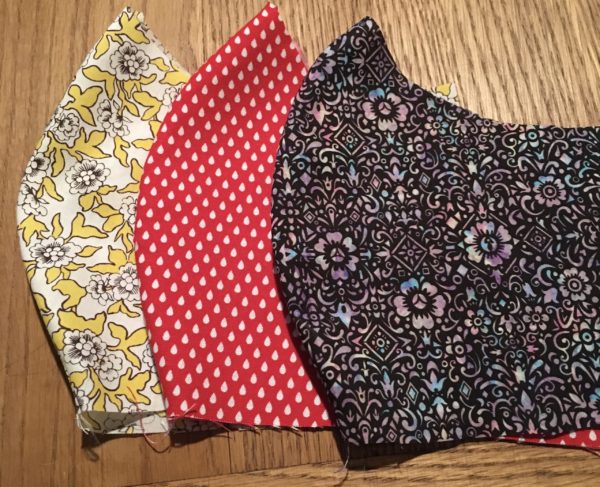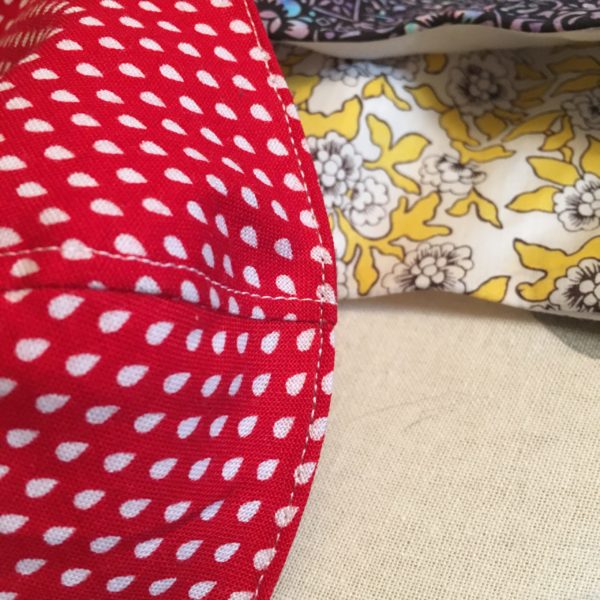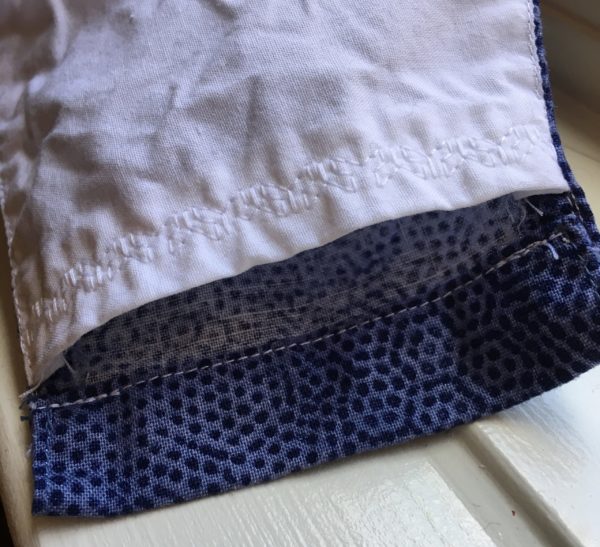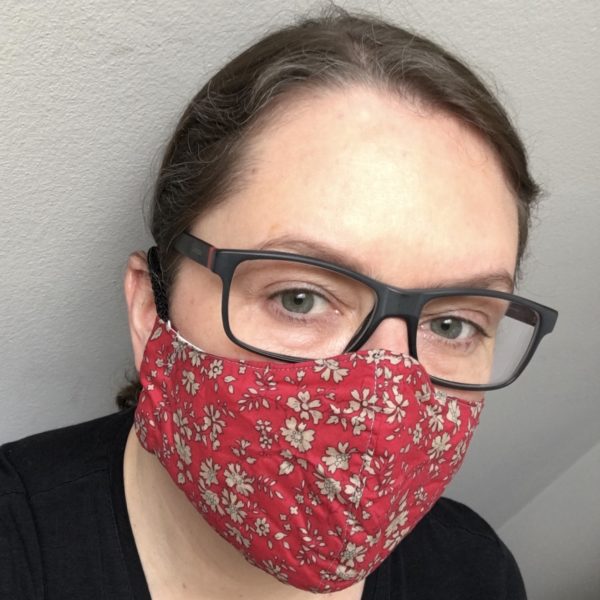It looks like we all should be wearing masks for a while, which isn’t anyone’s idea of a rollicking good time, so here’s my thinking about how to make them as unobjectionable and effective as possible. Non-medical, everyday masks should be:
- Comfortable (as comfortable as possible under the circumstances, anyway). They shouldn’t itch or feel rough or poke you or make odd noises or pull on your ears.
- Reasonably attractive. It’s an extra burden to put on something you think is hideous.
- A good fit. If it’s too big and you you can’t see over it or if it’s too small to cover your nose or chin, then it’s no good.
- A little bit hard to put on and take off. If you’re touching it all the time, pulling it down below your chin, yanking at your ears, hanging it off one ear or things like that, you’re touching your mask and your face and hair way too much. Once it’s on it should stay on.
- At least two layers of fabric. So far the studies are showing two layers are much better than one. More than two layers might be better still but the more layers you have, the hotter it is to wear and the harder it is to breathe through. I find two layers is still breathable without too much effort, and not too hot.
- Without an exhalation valve. The whole point is to keep your exhaled droplets to yourself.
- Not disposable. The world does not need more disposable stuff, and I think we can expect more supply-chain disruptions as time goes on so it’s best to have something more permanent on hand.
- Machine washable and, ideally, dryable.
Given all that, here’s an example of the ones I’ve settled on.

They’re adapted a bit from the patterns on this site, which come in multiple sizes. I make the version with filter pockets. I find the largest size is fine for most adults.
- They tie behind your head, so they don’t pull at your ears. You can put elastic ear-loops in place of the tie if you want, though. We have one like that for haircuts and other similar circumstances.
- The outside is made from good-quality tightly-woven 100% cotton — often offcuts from clothes or quilts I’ve made (I do hoard my scraps) or other bits and pieces from my stash.

- I run a topstitched seam* (i.e., I run visible stitching very close to an edge) down the front of the mask to keep the inside edges of the fabric nice and flat, pressed to one side so it doesn’t bunch up on your nose. I also topstitch around the outside edges so the mask keeps its shape nicely through multiple washes.

- Masks are lined with soft, tightly-woven 300-count white cotton from a pillowcase or sheet. I didn’t want to risk having fabric dye transfer to people’s faces when the masks get damp and/or sweaty.
- There’s a separate small pocket for a nose wire sewn in between the two mask layers to improve the fit and keep your glasses from fogging up. For the wires themselves I find the plastic and metal bands that close bags of coffee beans work best — cut in half in both directions, you can get four sturdy flat nose wires from one band. Florist wire also works.
- There’s a slot in one side of the inside layer of the mask so you can add another layer or a filter if you like. It also allows you to get at the nose wire.

- Sometimes the ties are cotton tapes, some are paracord, and some are laces pulled from hoodies or just plain (new) shoelaces. The laces might not last quite as long in the dryer as do the ties, but cotton tapes are a serious, time-consuming pain to make and laces are easy to replace. Using one long lace means you can hang the mask conveniently around your neck until you need to put it on. (This would definitely be a choking hazard for children.)

- I’m using plastic spring toggles on the ties for quite a few masks lately — they make adjustment easier. But it’s still behind your head and it takes thought and effort to reach it so you’re not tempted to pull the mask off all the time.
- They’re machine-washable and dryable, although it’s an excellent idea to put them in a lingerie bag first so the ties don’t tangle themselves into a massive knot.
* I’ve read a few anti-topstitching comments along the lines of “don’t punch holes in your fabric” but I don’t buy that as a serious argument. Two reasons: One, yes, a needle punches a hole in the fabric — but it also fills it with thread. Two, fabric tightens up around any holes when you wash it. Ever worn a pin on a shirt and then washed it to get rid of the holes? Then you know what I mean. Anyway, there’s also a lining layer and when it comes to it these are non-medical masks — it’s only a bit of fabric, so let’s not overthink it too much.


